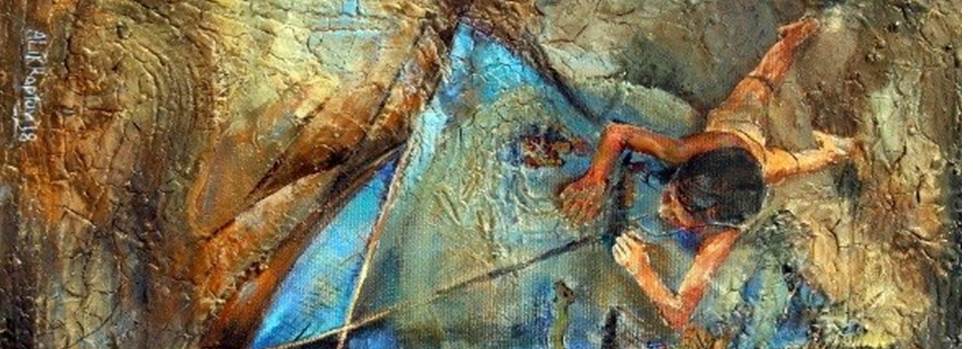These articles are now archived and will no longer be updated.

An exhibition of work by prominent Bangladeshi artists, which draws on the experience of rural poverty in the country, is to open at Swansea University on 19 December.
It forms part of a Swansea-led project that aims to reduce poverty in Bangladesh and India by tackling diseases in fish and other marine species which form the livelihood for many coastal and riverside communities.
The project, known as PACONDAA, is a collaboration between nine research institutes in India, the UK and Bangladesh, including Swansea University. The team work with farmers to identify best practice and spread this throughout farming communities.
Central to the team’s work is learning more about disease outbreaks, in the hope of developing new ways of preventing them in the future. Many diseases have a significant impact when crop species, including fish and shrimp, are raised at high densities and under stressful conditions.
Involving communities is an essential part of the PACONDAA project, which is where art can play a role, helping people to tell and share their stories and inspiring people to champion the work.
The exhibition features paintings by internationally acclaimed artist Shaid Kabir along with artworks by Mustafa Jamil Akbar, Nayan Dey, Jinnatun Jannat, Bobita Akhter and Mahamudul Hasan. They worked with the some of the most disadvantaged people in Bangladesh helping them express their stories of rural poverty.
Exhibits include the painting “Canvas of rural childhood” by Alik Kumar Raptan (pictured above), one of the main winners of Swansea University’s Research as Art Competition 2018.
On Thursday 19 December at 10am the exhibition will be unveiled by Pro-Vice Chancellor Professor Martin Stringer in the West Wing of the Wallace building on Singleton campus.
Dr Sergei Shubin of the College of Science at Swansea University, who leads the PACONDAA project, said:
"It is great to see this exhibition open at Swansea, illuminating the lives of people in Bangladesh who are our partners in the research.
Art and artistic practice is a crucial part of our work with communities. Using art, rather than just language, can help boost the learning on all sides, as well as break down existing stereotypes about poverty
Our overall aim is to establish participation, inspire new thinking and encourage people who are largely excluded - and often illiterate - to get involved in shaping their future.”
The exhibition is open to staff and the public.
